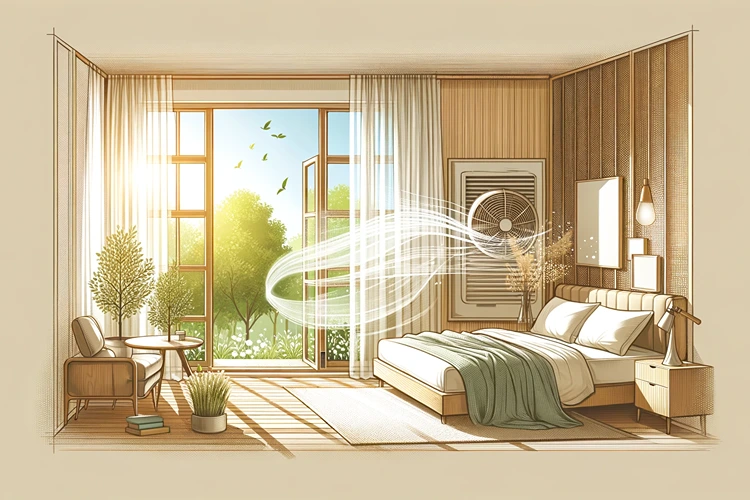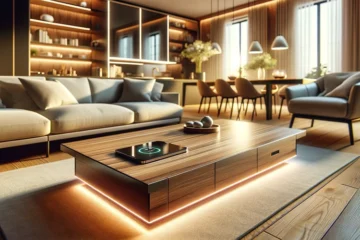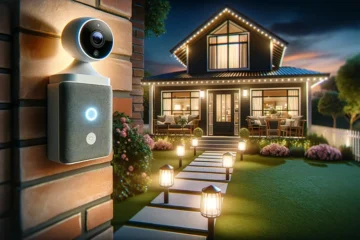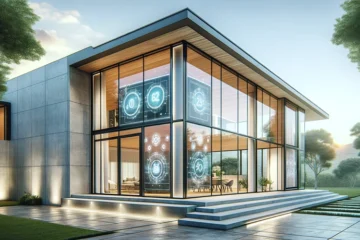Maximizing Home Safety with Natural Light and Airflow Design

Ever pondered how the design of your home affects your well-being and safety? It’s not just about aesthetics; the way natural light and airflow circulate within your space plays a pivotal role. This article explores the art of enhancing home safety through strategic natural light and airflow design, shedding light on a healthier, brighter living environment.
Understanding the Basics of Natural Light and Airflow
Natural light and airflow are more than just components of home design; they’re essential elements that contribute to our physical and mental health. But how exactly do they impact our safety and well-being? Let’s dive deep into their benefits and the principles behind their effective integration into our homes.
- Natural Light: It’s not just about illuminating your space. Exposure to natural light boosts vitamin D levels, improves mood, and even enhances sleep quality. By maximizing natural light, you’re not just creating a visually appealing space; you’re crafting an environment that supports your health.
- Airflow: Good ventilation is crucial for maintaining indoor air quality. Proper airflow design helps eliminate pollutants, controls humidity levels, and reduces the risk of respiratory issues. It’s about creating a breathable, comfortable home environment.
The Impact of Design on Safety and Well-being
Integrating natural light and airflow effectively into home design isn’t just about comfort; it’s a critical aspect of home safety. Adequate lighting can reduce the risk of accidents, while good ventilation is essential for preventing the buildup of harmful pollutants. But how can we achieve this balance?
Helpful Hint:
Consider the orientation of your home when planning for natural light. South-facing windows allow for ample sunlight throughout the year, enhancing the warmth and brightness of your living spaces.
Strategies for Maximizing Natural Light
To harness the full potential of natural light, it’s important to adopt specific design strategies. From the placement of windows to the choice of materials, every decision plays a role in how light permeates your home. Here are some tips to get you started:
- Use reflective surfaces to amplify light.
- Install larger windows or skylights in darker areas.
- Choose light-colored walls and floors to enhance brightness.
Stats:
A study shows that homes with ample natural light can reduce energy consumption by up to 75%. This not only promotes a safer environment but also contributes to energy efficiency.
Optimizing Home Layout for Effective Airflow

Good airflow is not by chance; it’s the result of thoughtful design and planning. Optimizing your home’s layout for airflow involves considering the placement of windows, doors, and even the structure of your home. Here’s how to create a space that breathes:
- Align windows and doors to create cross-ventilation.
- Incorporate open spaces to allow air to circulate freely.
- Use fans and ventilation systems to support natural airflow.
Benefits of Natural Light and Airflow for Health and Safety
Emphasizing the significance of natural light and airflow transcends aesthetic appeal, directly impacting our health and home safety. Adequate exposure to natural light is linked to improved mood and cognitive function, while effective airflow significantly reduces the risks associated with indoor pollutants and moisture, which can lead to mold growth and respiratory issues.
Natural Light: A Catalyst for Enhanced Mood and Productivity
The infusion of natural light into your home can transform it into a sanctuary of wellness. Studies indicate that natural light helps regulate our circadian rhythms, leading to better sleep patterns and increased productivity. Moreover, it reduces the reliance on artificial lighting, contributing to energy conservation and lower utility bills.
Ensuring Air Quality and Comfort through Effective Airflow
Strategic airflow design is essential in mitigating indoor air pollutants, which are often cited as a leading environmental risk to health. By fostering effective ventilation, homes can enjoy fresher air, reduced allergen levels, and a more comfortable living environment, particularly in areas with high humidity.
Helpful Hint:
Integrating plants into your home not only enhances its aesthetic but also improves air quality. Certain plants are known for their air-purifying abilities, adding a natural layer of filtration to your indoor environment.
Design Considerations for Maximizing Safety and Well-being
When planning your home’s layout and design, considering how to maximize natural light and airflow is crucial for promoting safety and well-being. This involves not just the architectural elements but also the materials and finishes used throughout the home.
Material Choices That Enhance Light and Airflow
Selecting the right materials is key in promoting natural light diffusion and effective ventilation. For instance, using glass or translucent materials for partitions can help light permeate spaces more effectively. Similarly, breathable materials such as cotton or linen for window treatments can improve airflow compared to heavier fabrics that may obstruct it.
Technological Advances in Home Safety and Comfort
Innovations in home design and technology have introduced new ways to enhance natural light and airflow. Smart glass windows that adjust their opacity based on sunlight intensity can optimize indoor lighting conditions without manual intervention. Similarly, advanced ventilation systems equipped with sensors can automatically adjust to maintain optimal indoor air quality, ensuring a healthy living environment.
Stats:
Implementing smart home technologies can lead to a 30% reduction in energy consumption for lighting and HVAC systems, showcasing the blend of comfort, safety, and sustainability achievable through thoughtful design.
Practical Tips for Homeowners
Enhancing your home’s natural light and airflow doesn’t always require major renovations. Simple adjustments and additions can make a significant difference in how your space feels and functions. Here are some practical tips for homeowners looking to improve their living environment:
- Regularly clean windows to allow maximum light entry.
- Arrange furniture to promote unobstructed air circulation.
- Consider the use of mirrors to reflect and distribute light throughout rooms.
Overcoming Common Challenges in Light and Airflow Design
While the advantages of maximizing natural light and airflow are clear, homeowners often face challenges in implementing these principles effectively. Obstacles such as limited space, privacy concerns, and energy efficiency requirements can complicate efforts. However, with creative solutions and strategic planning, these challenges can be addressed to create a safe, comfortable, and inviting home environment.
Addressing Privacy Without Sacrificing Light and Airflow
Privacy is a significant concern, especially in densely populated areas. Utilizing frosted or tinted glass can maintain privacy while still allowing light to penetrate. Landscaping features such as strategically placed trees or shrubs can also provide a natural barrier without obstructing airflow or light.
Enhancing Small Spaces for Optimal Light and Airflow
In smaller homes or apartments, the key to maximizing light and airflow lies in clever design and organization. Multi-functional furniture, such as ottomans with storage or wall-mounted desks, can free up floor space, allowing air to circulate more freely and light to travel further into the space.
Helpful Hint:
To enhance natural light in compact spaces, consider adding high-gloss finishes to ceilings or floors. These surfaces can reflect light, making rooms appear brighter and more spacious.
Future Trends in Home Design: Sustainability and Well-being
Looking ahead, the future of home design emphasizes sustainability and the well-being of its inhabitants. This involves not only maximizing natural light and airflow but also incorporating eco-friendly materials and technologies that reduce environmental impact while enhancing indoor environmental quality.
Sustainable Materials and Construction Techniques
Eco-friendly construction materials, such as bamboo flooring or recycled glass countertops, offer sustainable alternatives that also contribute to a healthier indoor environment. Moreover, construction techniques that enhance natural insulation and ventilation can improve energy efficiency and reduce the need for artificial lighting and climate control.
Smart Home Systems for Enhanced Environmental Control
Advanced smart home systems that integrate with natural light and airflow design are becoming increasingly popular. These systems can automatically adjust window shades, dim lights, or activate fans based on real-time environmental conditions, optimizing comfort and energy efficiency.
Stats:
Adoption of smart home technologies is projected to grow by 25% annually over the next five years, highlighting the increasing demand for homes that are not only smart but also sustainable and health-focused.
FAQs
Bottom Line
Maximizing home safety with natural light and airflow design is not just a trend but a lifestyle change that promotes health, well-being, and sustainability. By embracing the principles of effective design, homeowners can create spaces that are not only beautiful but also conducive to a healthier, more comfortable life. As we move towards a future where the home is a sanctuary of wellness, integrating natural elements into our living spaces becomes increasingly important. Let’s illuminate our homes with the brilliance of natural light and breathe life into every corner with fresh air, crafting spaces that nurture and protect.


